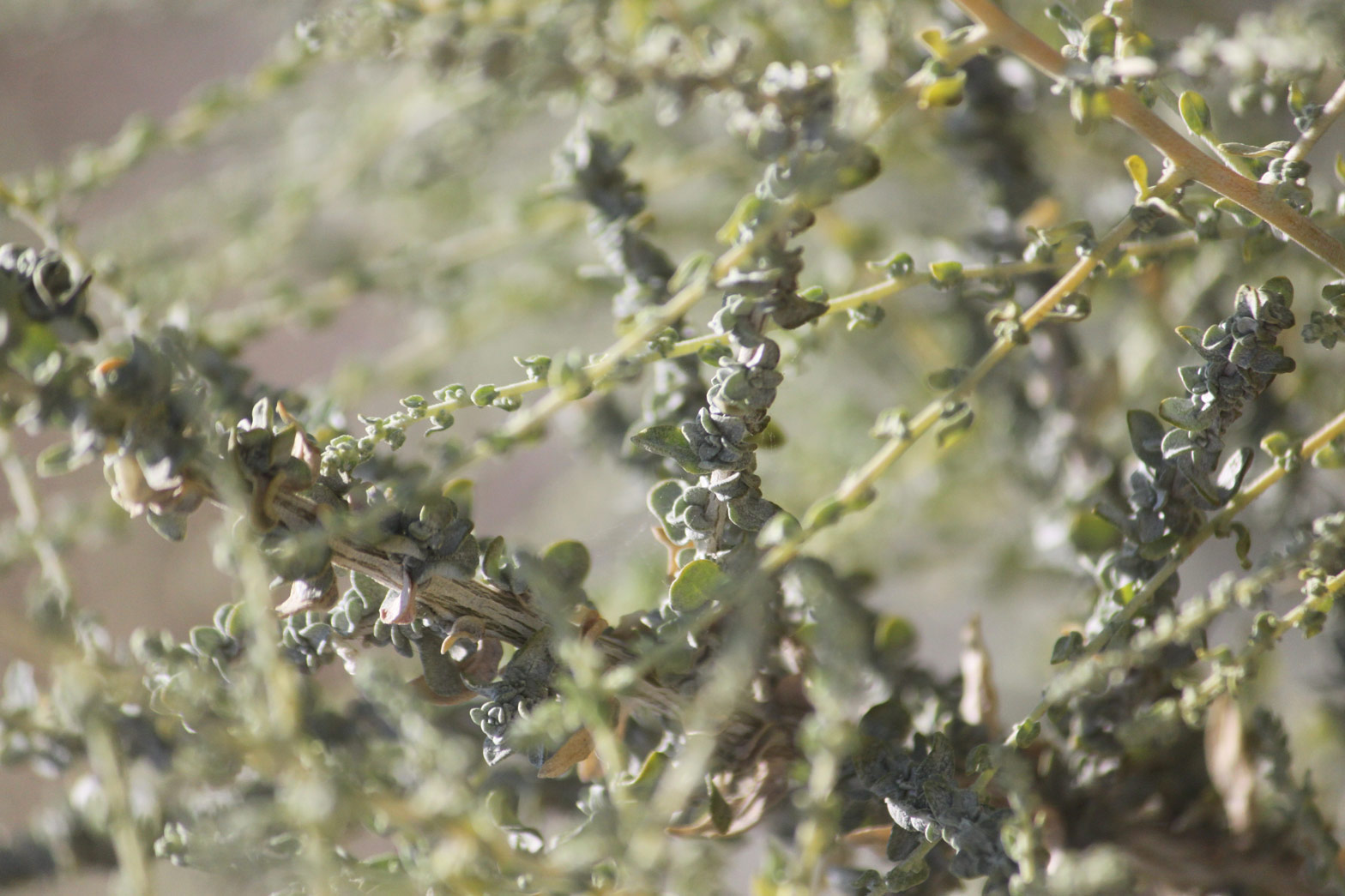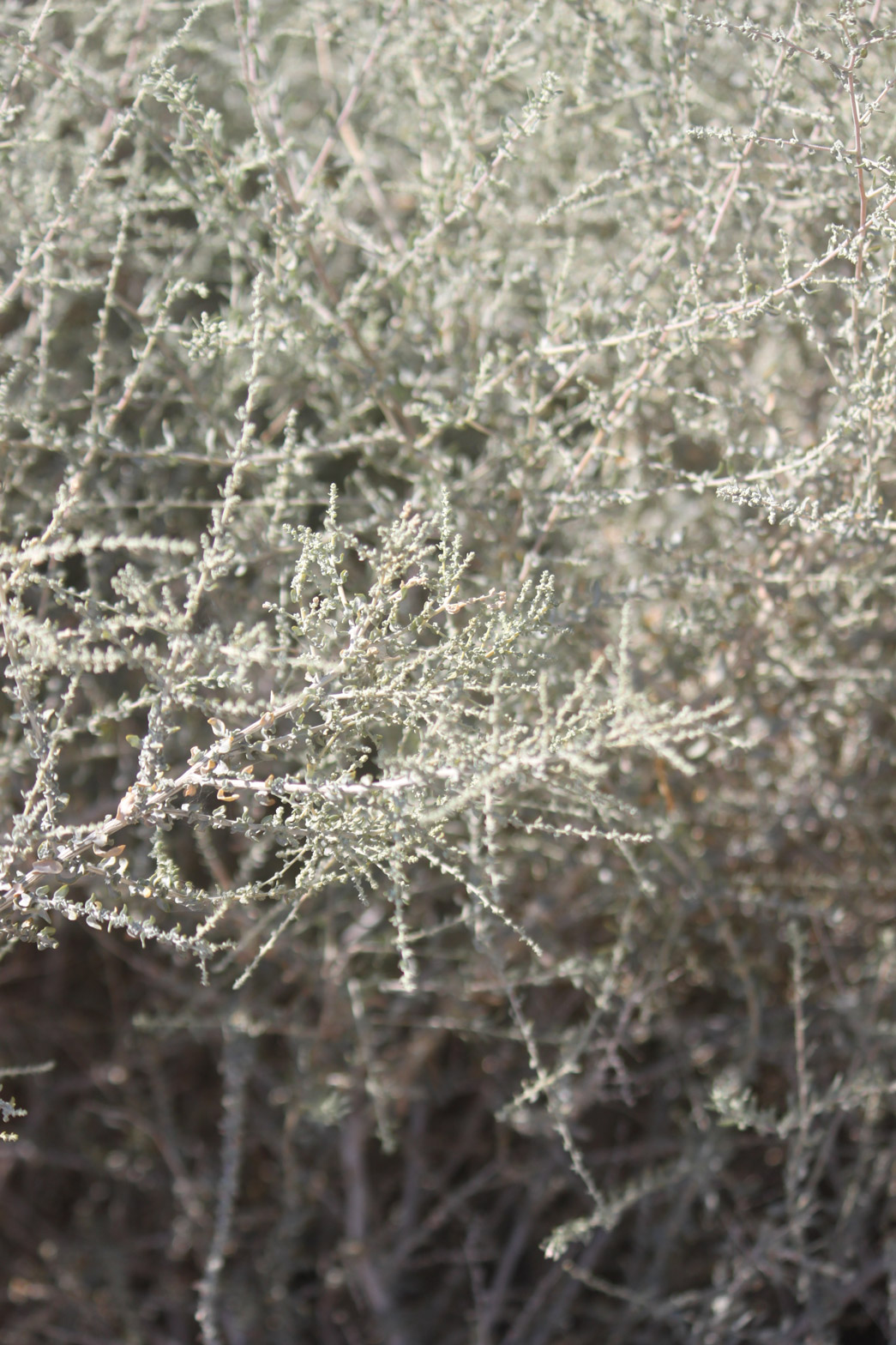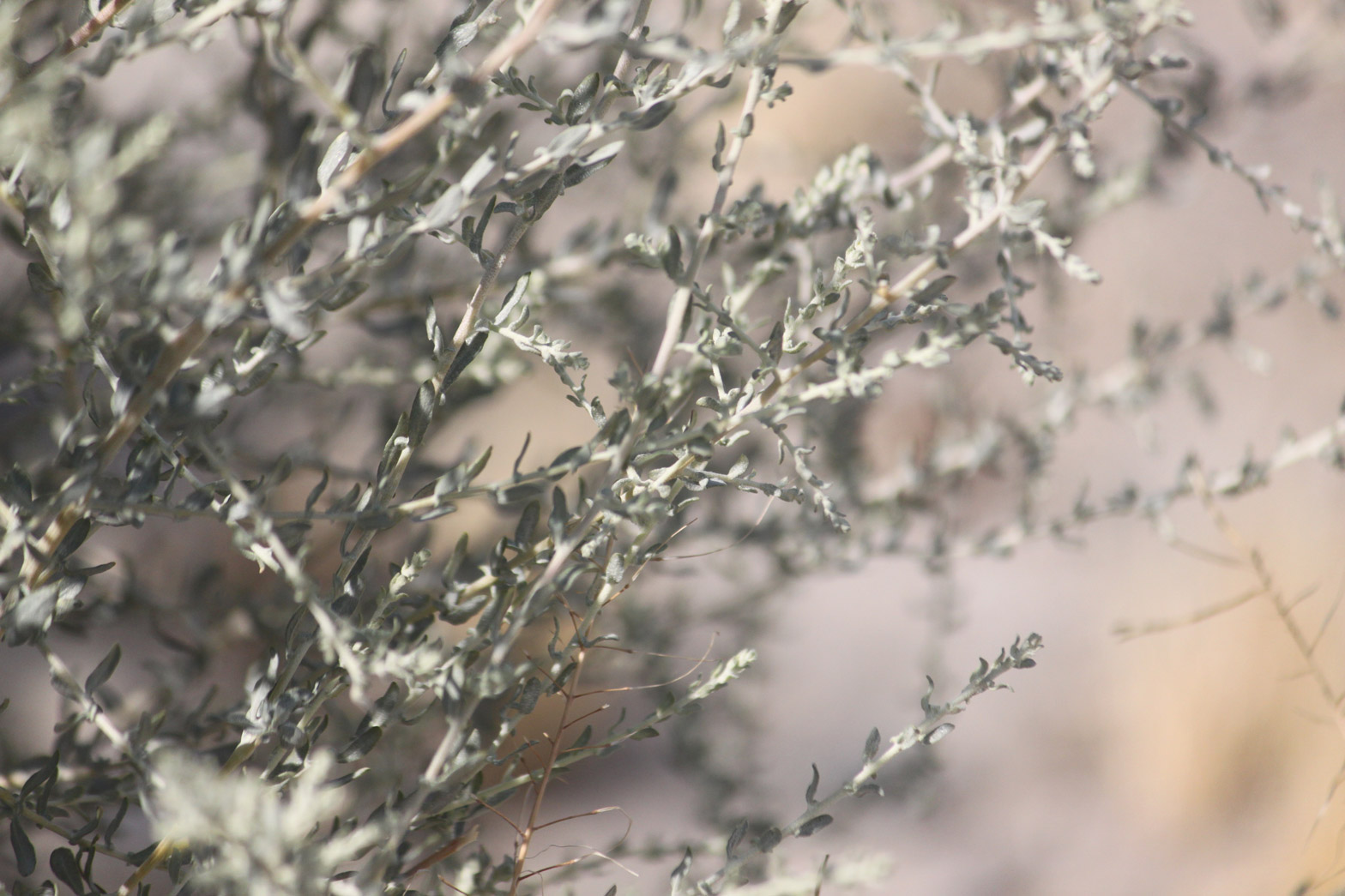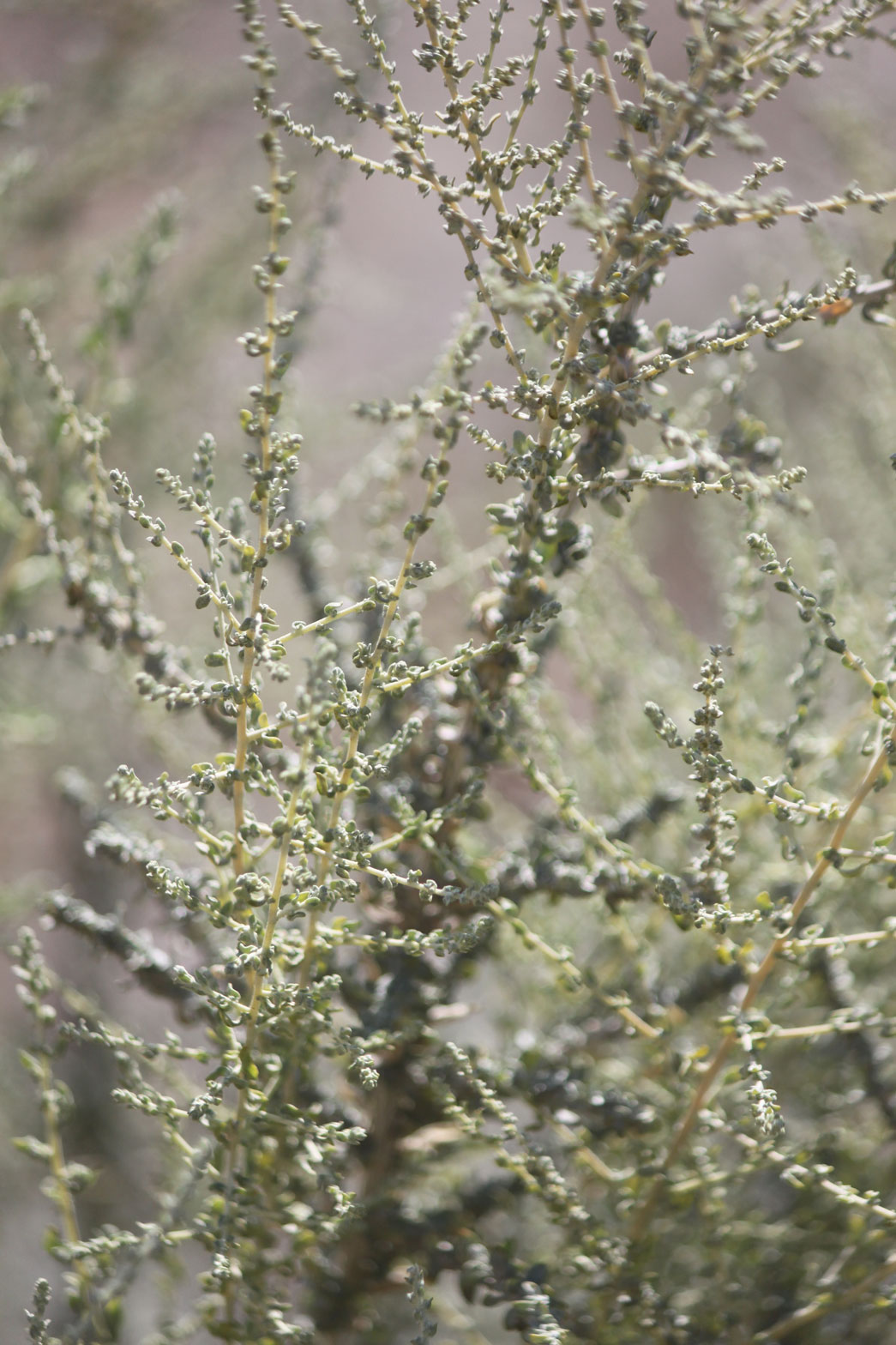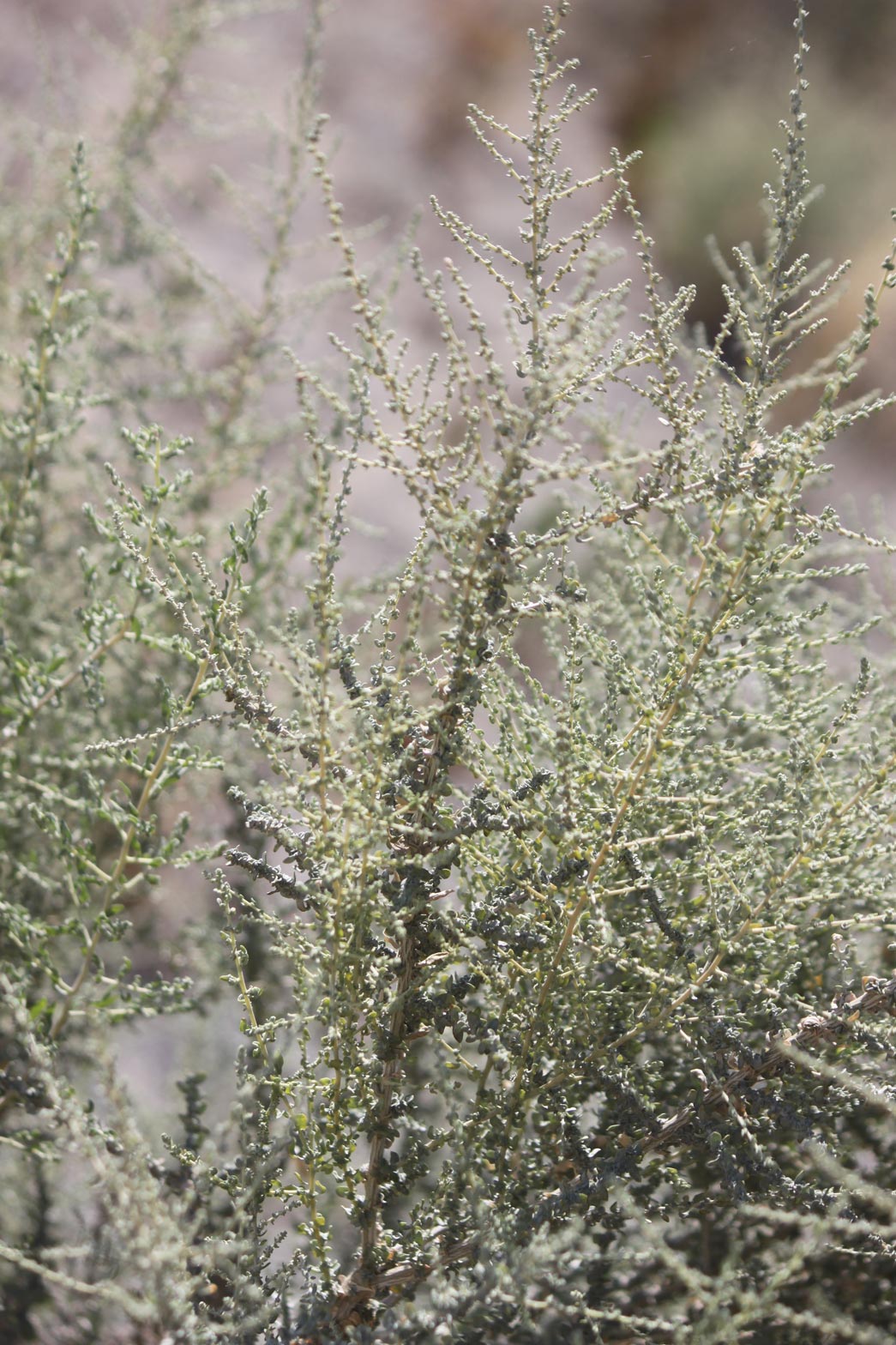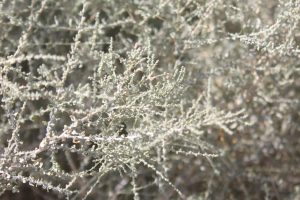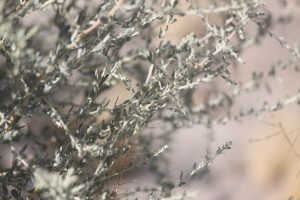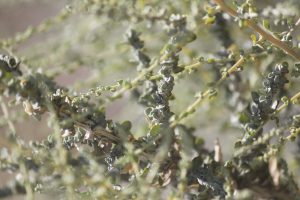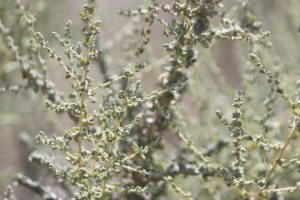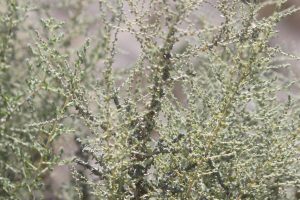This desert shrub is widespread in desert habitats and does best in alkaline plains. Salt Bush can tolerate soil conditions that other desert natives cannot. It does well with Creosote, but is sometimes found in pure stands with few to no other species. It has a unique adaptation to eliminate the high salt content in desert soil. The hairs on the leaves excrete the salts onto the plant surface. This not only removes the salt from within the plant, but the excreted salt then creates a sunblock on the plant surface. It gives Salt Bush a gray appearance.
It blooms with clusters of cream-colored flowers. This is one plant that requires both a male and female plant for pollination.
It is native to the southwestern United States and northern Mexico.
